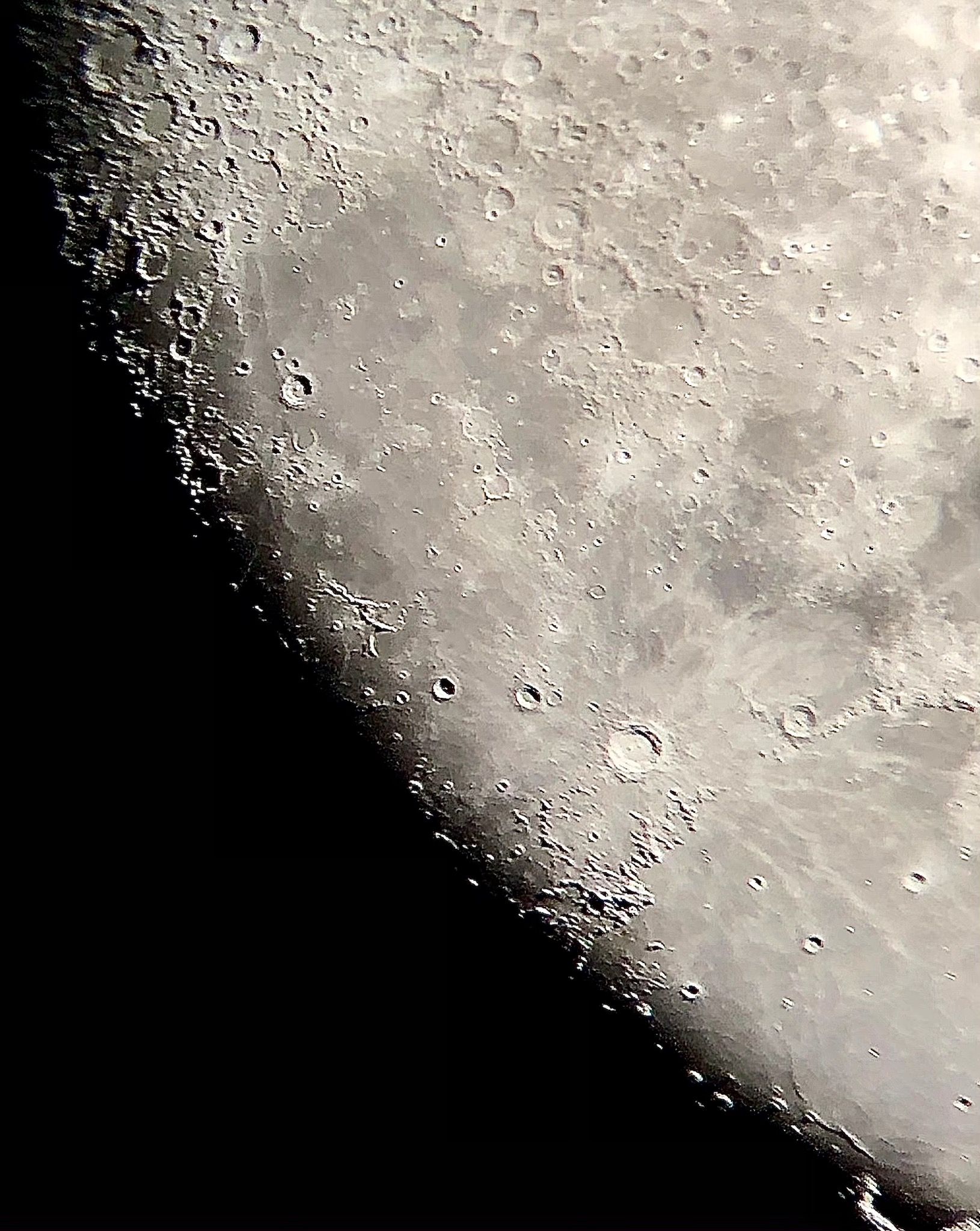New Discoveries from India’s Chandrayaan-3 Rover at the Lunar South Pole Using LIBS and APXS Spectroscopy
India's Chandrayaan-3 mission is the first successful attempt to land on the moon’s southern region and has uncovered several noteworthy discoveries on the lunar south pole using laser-induced breakdown spectroscopy (LIBS) and other spectroscopic techniques.
We are still learning new things about our Moon. As of September 6, it has been 54 years, 1 month, and 22 days since the historic Apollo 11 landing on the Moon, which occurred on July 20, 1969. Even so there are new discoveries to be made about the composition of the lunar surface.
An image of the Moon silhouetted by darkness | Image Credit: © Jerome Workman, Jr.

India's Chandrayaan-3 mission, which is the first successful attempt to land on the moon’s southern region, has made history by uncovering intriguing discoveries on the lunar south pole (1). Its laser-induced breakdown spectroscopy (LIBS) instrument, developed by the Laboratory for Electro-Optics Systems (LEOS)/ISRO (2) in Bengaluru, formerly known as Bangalore, India, has conducted pioneering in-situ measurements of the lunar surface (1). These measurements have led to the discovery of previously unknown elements present in the south polar region.
LIBS, a sophisticated scientific technique, employs high-energy laser pulses to analyze the composition of materials on the Moon’s surface. By focusing laser pulses onto the lunar soil, it generates a localized high-temperature plasma, and the emitted light from this plasma is optically captured and analyzed. Each element emits distinct wavelengths of light when in a plasma state, allowing scientists to identify the elemental composition of the sample material.
The preliminary analysis conducted using LIBS revealed the presence of several elements on the lunar surface, including aluminum (Al), sulfur (S), calcium (Ca), iron (Fe), chromium (Cr), and titanium (Ti). Subsequent measurements have also unveiled the presence of manganese (Mn), silicon (Si), and oxygen (O) (1). However, further investigation is still ongoing to determine the presence of hydrogen (H).
In a remarkable development, LIBS detected sulfur (S) in the lunar soil near the south pole, confirming its presence unequivocally (1). This discovery is significant as it was previously not possible to confirm the presence of this element using remote orbiter analysis techniques.
Simultaneously, the alpha particle X-ray spectrometer (APXS) onboard the Chandrayaan-3 rover Pragyan has contributed to these exciting findings. Developed by the Physical Research Laboratory (PRL) in Ahmedabad, India, with support from the Space Application Centre (SAC) Ahmedabad, and a deployment mechanism built by UR Rao Satellite Centre (URSC) in Bengaluru, India. APXS has shown to be ideal for in-situ analysis of the elemental composition of soil and rocks on celestial bodies with minimal atmospheres, such as the Moon (3).
APXS works by emitting alpha particles and X-rays onto the lunar surface, which interact with the surface soil, causing the atoms within the soil to become excited. As the excited atoms return to their ground state, they emit characteristic X-ray lines unique to each element present in the sample. By measuring the energies and intensities of these X-ray lines, researchers can identify the elements present and their concentrations. Notably, APXS observations have also confirmed the presence of sulfur, among other elements, alongside major expected elements like aluminum, silicon, calcium, and iron (3).
These pioneering discoveries by the Chandrayaan-3 mission's LIBS and APXS instruments have provided new insights into the lunar south pole's composition, advancing our understanding of Earth's nearest celestial neighbor. As researchers continue to analyze the data, we can anticipate even more revelations about the lunar surface's intriguing secrets.
References
(1) Indian Space Research Organisation, Department of Space, August 28, 2023, https://www.isro.gov.in/LIBSResults.html (accessed 2023-09-06).
(2) Electro-Optics Systems (LEOS)/ISRO, Bengaluru, India, https://isro.gov.in/LEOS.html (accessed 2023-09-06).
(3) Indian Space Research Organisation, Department of Space, August 30, 2023, https://www.isro.gov.in/APXS.html (accessed 2023-09-06).
Laser Ablation Molecular Isotopic Spectrometry: A New Dimension of LIBS
July 5th 2012Part of a new podcast series presented in collaboration with the Federation of Analytical Chemistry and Spectroscopy Societies (FACSS), in connection with SciX 2012 — the Great Scientific Exchange, the North American conference (39th Annual) of FACSS.
AI Shakes Up Spectroscopy as New Tools Reveal the Secret Life of Molecules
April 14th 2025A leading-edge review led by researchers at Oak Ridge National Laboratory and MIT explores how artificial intelligence is revolutionizing the study of molecular vibrations and phonon dynamics. From infrared and Raman spectroscopy to neutron and X-ray scattering, AI is transforming how scientists interpret vibrational spectra and predict material behaviors.
Advancing Corrosion Resistance in Additively Manufactured Titanium Alloys Through Heat Treatment
April 7th 2025Researchers have demonstrated that heat treatment significantly enhances the corrosion resistance of additively manufactured TC4 titanium alloy by transforming its microstructure, offering valuable insights for aerospace applications.

.png&w=3840&q=75)

.png&w=3840&q=75)



.png&w=3840&q=75)



.png&w=3840&q=75)